Exactly 200 years after Irish blind poet Thomas Moore sung in praise of Kashmir, its beauty, its women and their eyes in his epic-poem, hunter guns brought the pelleted eyes back in sharp focus, reports Masood Hussain

(Thomas Moore)
It was exactly 200 years ago when Irish poet Thomas Moore decided to pen down his era’s most precious book-length poem, Lalla Rookh, in 1816. Comprising four interpolated tales, this oriental romance details travel of a Mughal princess from Delhi to Kashmir where she was supposed to meet her groom. When she finally meets him, she was surprised that it was the same poet-storyteller who entertained her while accompanying her caravan.
Lalla Rookh has been crucial to Kashmir’s history. As the poet – who had never visited Kashmir, sang in praise of Cashmere, it sent hoards of visitors who found the breathtaking vale in a wretched state. Their arrival evolved into commerce as their observations offered Kashmir the foundations of a political awakening and a serious reconnect with the civilized world that introduced modern healthcare and education.
Who has not heard of the Vale of Cashmere,
With its roses the brightest that earth ever gave,
Its temples and grottos and fountains as clear
As the love-lighted eyes that hang over their wave
Moore’s Lalla Rookh mentions the eyes so frequently that it seemed as if he was writing for Kashmir 2016. He has talked about the “dead despondency of those sunk eyes” and the “eyes more devoutly willing to be blind”.
But why so mournful, child? those eyes, that shone
‘All life last night – what! – is their glory gone?..
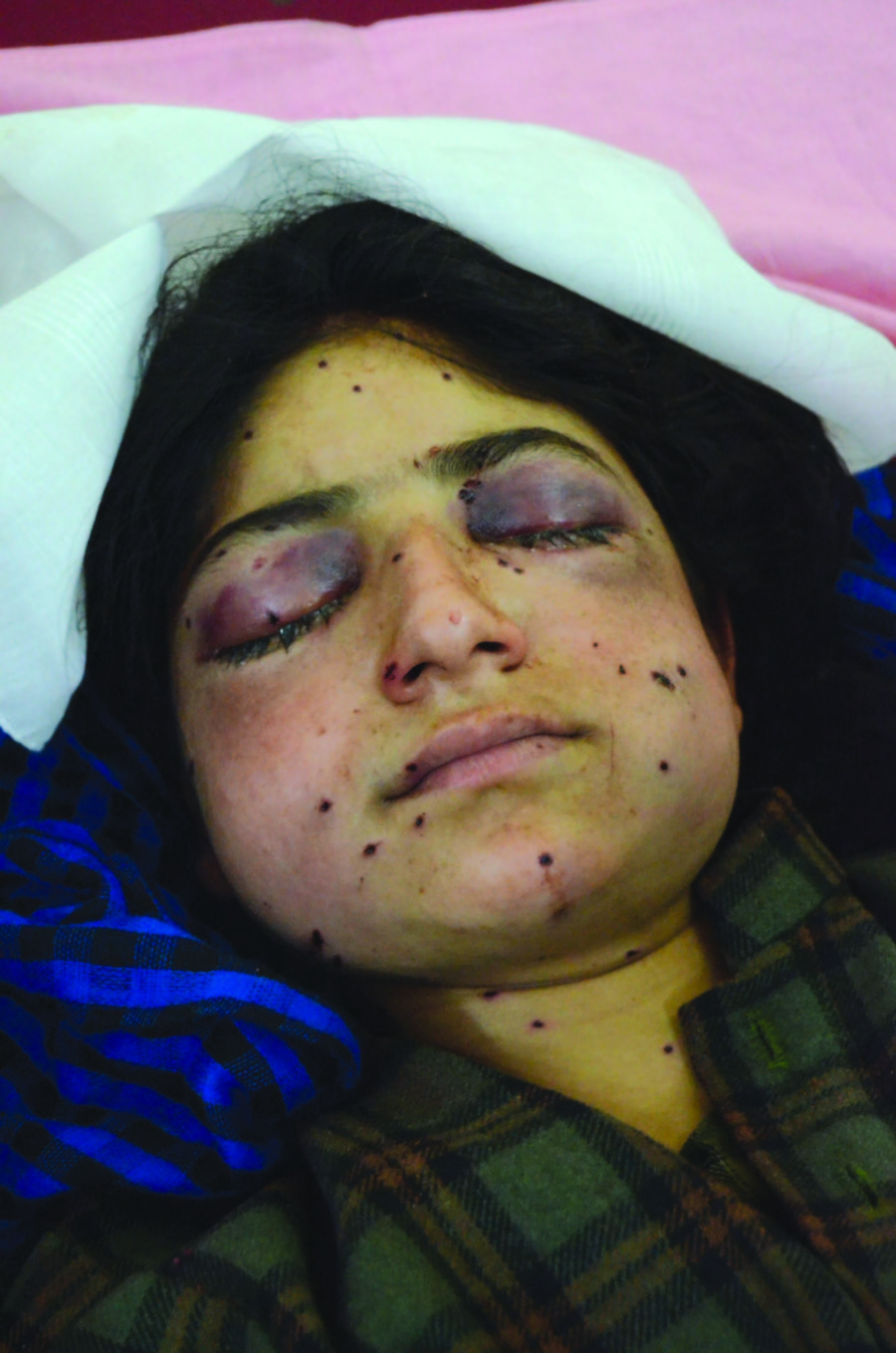
(Irfah Dar)
In SMHS, Ifrah Dar, the 14-year-old girl from Ruhmoo hamlet in Pulwama, seemingly lived part of the Dublin poet’s Lalla Rookh. Interestingly, the poet lost his eyes quite early in his life and died a blind man.
The eighth standard girl is conflict destitute. Her father Shakoor was young when he was caught in the crossfire and killed. It was her grandfather Abdul Aziz Dar who is taking care of Ifrah’s mother, sister and a little brother.
On Monday, October 31, 2016, there was tension in the village and at the peak of it, her mother asked her: “Where is your brother?”
“As I moved out and opened the main gate, somebody caught me by my hair and thrashed me on the ground,” she said, almost in agitation. “Then there was some sound and I felt pain throughout my body and fell down.”
She did not speak much.
Her hands were clasp’d her eyes upturn’d,
Dropping their tears like moonlight rain
Her doctors said they are sure one eye is seriously hurt. “We may require some more time to see what happened to her second eye,” Dr Afroz Lone said. Dr Tariq Qureshi, who heads the ophthalmology department, said he hopes she sees again and she is not blinded. Her family said she perhaps has faint eyesight left in her left eye.
Her cousin nursing her in the hospital said they had no idea of the pellets she has received. “There are countless pellets from her head to her chest,” the young man said. “She has undergone one surgery and maybe she needs more but I do not know.”
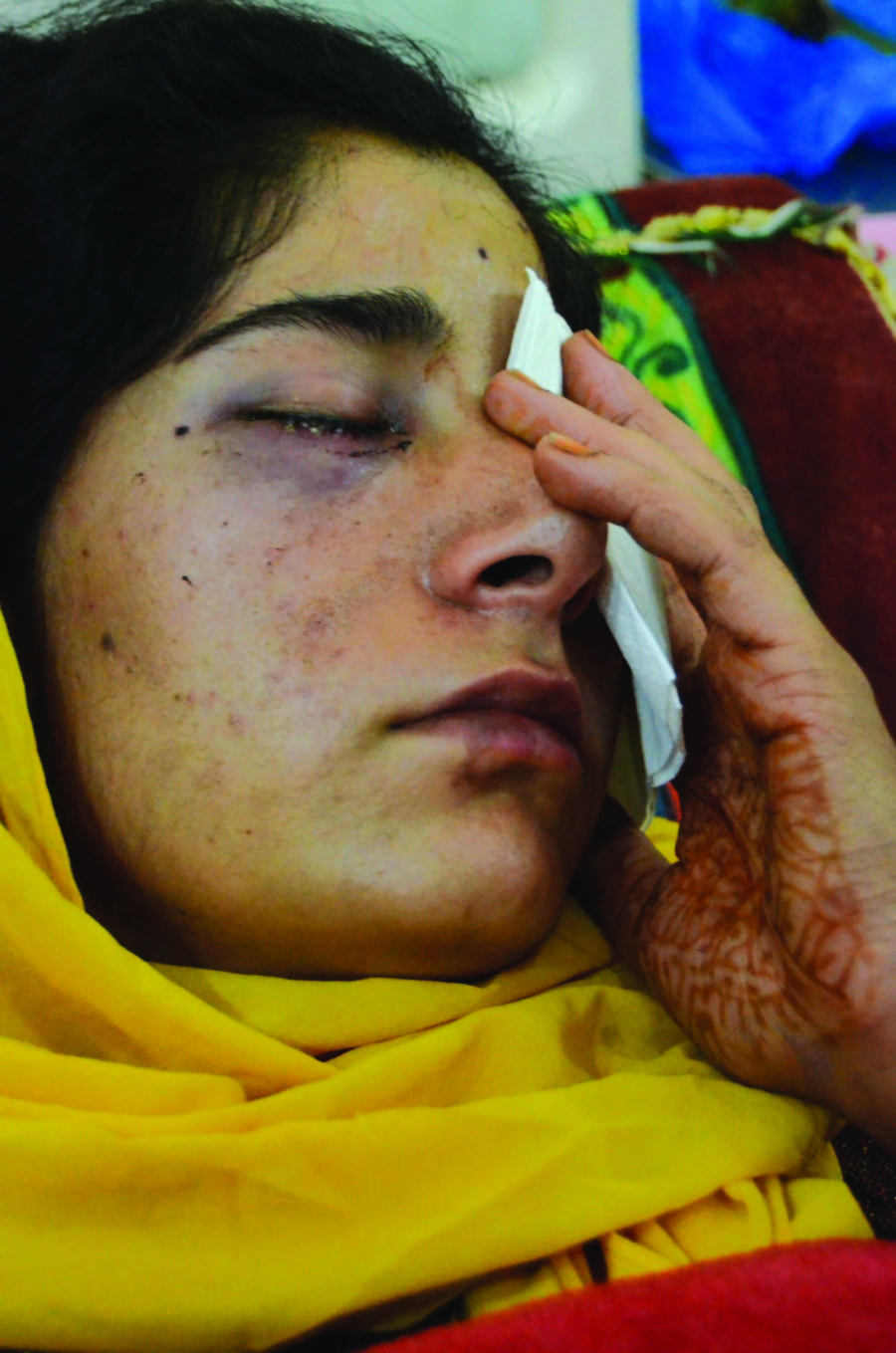
(Shabrooza Baghat)
In SMHS Ward 7, Ifrah is not alone. She has two teenagers, both named Shabrooza accompanying her. Both have one eye critically injured by the pellets.
Shabrooza Baghat, according to her brother has dropped out of school after studying up to eighth class. At the time of the tensions, she was in her room. “The cops attacked the homes and when they started breaking the windowpanes, she was scared,” Ishfaq said. “It was right there that they fired pellets and it damaged her left eye.”
Shabrooza Mir is a tenth standard student. Her mother Rafiqa Akram Mir said she had gone to Newa for making some purchases for her elder daughter who will be married shortly. “When I heard the village was raided by police, I decided to return because I did not want the jewelry of my daughter being looted,” Rafiqa said. “Somehow when I reached home, took possession of the small bag, there was chaos and women moved out fearing molestation. Shabrooza had moved barely a minute earlier.” The old lady said that once she moved out, she was told that her daughter was taken to hospital as she was bleeding.
The three girls have been discharged for the time being. They will now return on their turns to undergo surgeries.
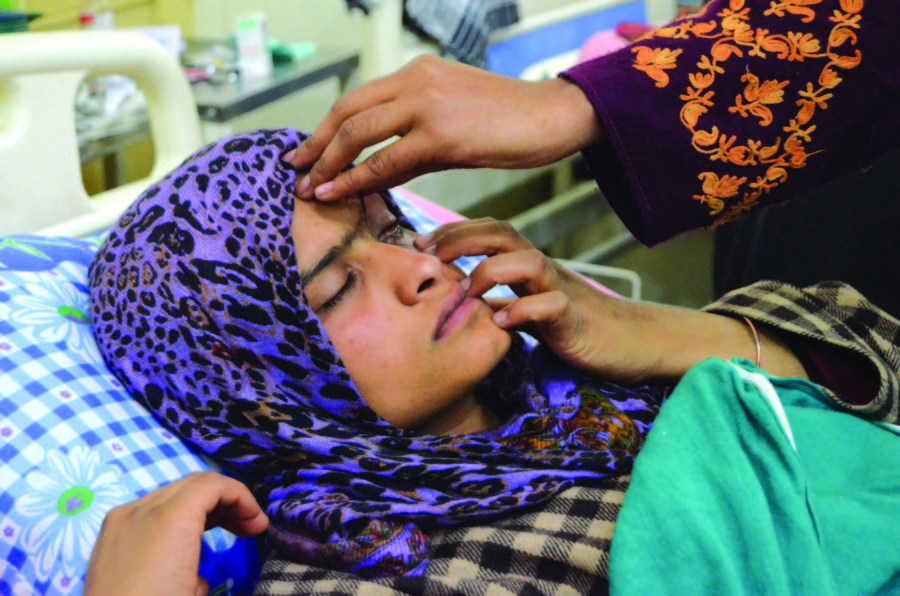
(Shabrooza Mir)
Rohmoo is a major hamlet. Almost 7km from Pulwama, 2011 census has counted 5030 residents living in 732 families. It has an army camp located on a hillock. Residents said on that day soldiers had cordoned off a neighbouring village. Once they returned, they started clearing separatist buntings in the village. “They burst tyres of a truck by firing on all the wheels,” one resident said, insisting, “the villagers reacted and it created a situation that they were chased to their camp.” The resident said that angry youth even tried to pull down the garrison compound wall. “Then the police came, destroyed house and showered village with pellets.” The three girls were among scores hit by the pellets.
“I was told by the police that they rushed to the village simply because the RR officer told them that since his camp is under attack if they cannot manage the situation within 15 minutes, he will open fire,” Deputy Commissioner Pulwama said. “As they tried to reach the camp, they faced blocked road and attacks by mobs and that is when the situation has taken place.”
But the explanation by police and the government officials is unable to help the poor girls who are writhing in pain and groping in dark. Oblivious of her surroundings, Ifrah is talking of the burn sensation that is almost devouring her head. She is frustrated if at all she will be able to take her books into her hand, again.
A viewless hand, that promptly ties
A bandage round her burning eyes;
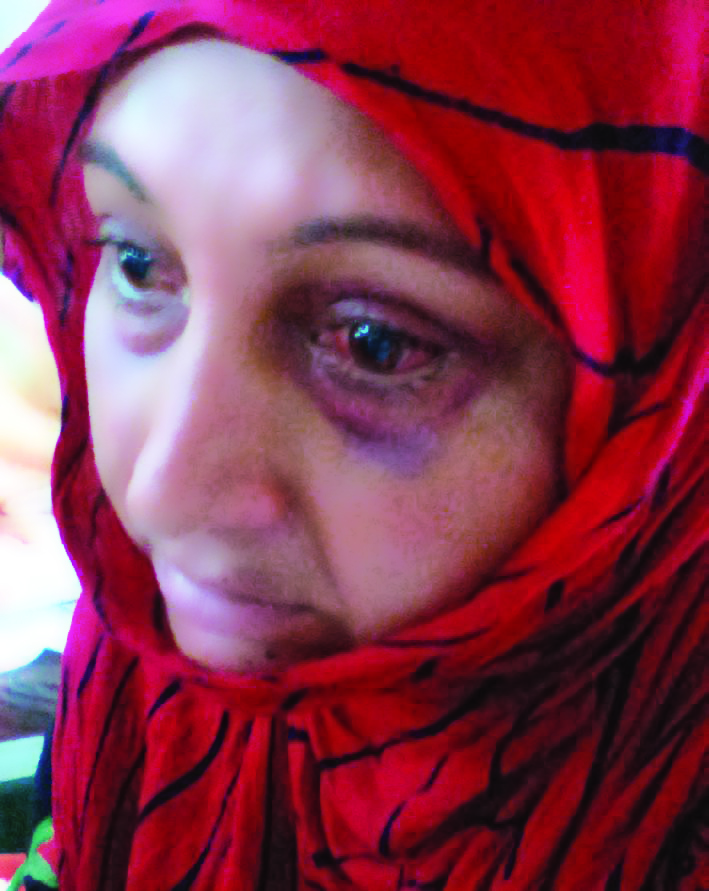
(Shakeela.)
The 2016 unrest that was triggered by the killing of teenage, homegrown rebel Burhan Wani had impacted more women unlike 2010 and 2008. Of more than 1100 people who were hit by the pellets and hospitalized, the women are in sizable numbers. There were women with pellet injuries on their faces and some reportedly carrying pellets on their legs.
It was early August when 49-year-old Ruby Shafi, a housewife, was driven to SMHS with scores of other villagers from Semthan village in south Kashmir. “She suffered a serious injury in the right eye as the pellet had devastated her globe,” one doctor said. “She may lose sight of that eye.”
Incidentally, neither of the females were part of any protests. They were either seeking their relatives or watching the happenings that they were hit by the pellets. Tamana of Tulmulla is a fifth standard student. On July 10, she was playing in her courtyard when police charged a mob outside and pellets hit her left eye and nose. Since then, the labourer’s daughter has undergone three surgeries.
Insha of Sedow village in Shopian has been the first victim of the pellets, this season. She has lost both her eyes. The second unfortunate woman having pellet injury in both her eyes is Shakeela, a divorce from Fatehgarh in Baramulla. Putting up with her brother, she fell victim to the hunter gun when she went out of her residence to see where her son Faheem had gone. Barely four-year-old, she feared her son should not get crushed in a stampede if there were protests on Friday because somebody had told her that her son had gone to prayers. Within minutes she was out she was hit. That was September 9.
She received pellets in both her eyes. Her left eye suffered seriously as compared to the right eye. Her right eye had received pellets on its sclera thus sparing the crucial iris, unlike the left eye. Doctors say she is reported for the follow-up.
Records at SMHS suggest that slightly more than 100 women had pellet injuries or pellet and bullet (excluding those with bullet injuries) were received. “By now we have 17 women having an eye injury,” a senior doctor told Kashmir Life. “In three cases we have patients having been hit in both eyes by pellets.”
In response to the ‘epidemic of dead eyes’, as New York Times puts it, artists manipulated the images of idols and nymphs to convey the message. Cartoonist Mir Suhail modified the poster of romantic blockbuster Kashmir Ki Kali starring Shammi Kapoor and Sharmila Tagore to show the actress with a pellet injury in one eye. “I thought, what would Kashmir Ki Kali look like if it had existed now?” Suhail said. “It was a kind of protest. I want to make people realise that they should view the Kashmir situation from a critical rather than a simplistic perspective.”
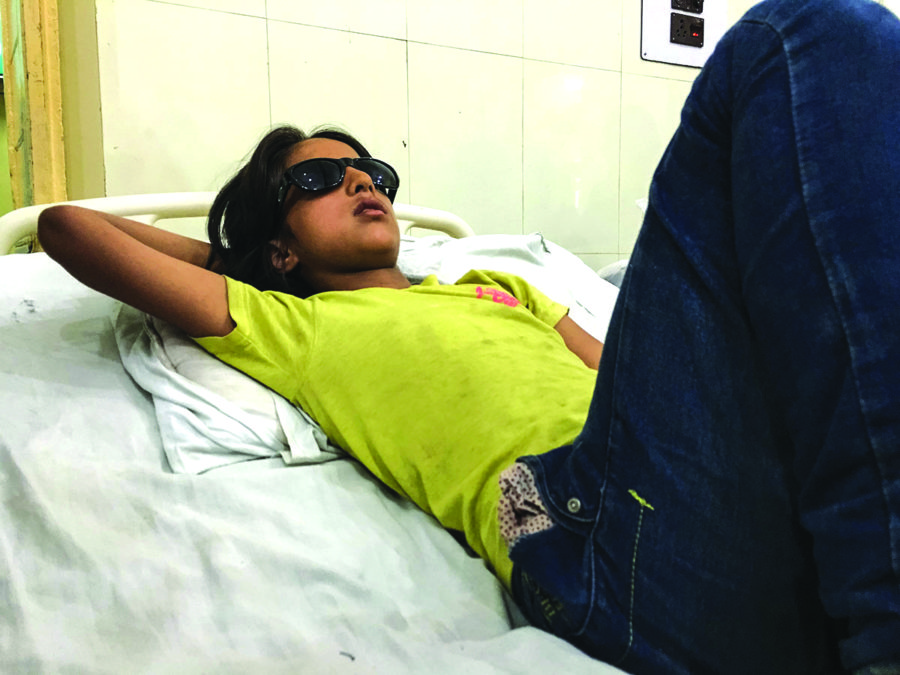
(Tamana.)
Barring Insha, however, there is no case in which the government extended any help to the hunter gun victims. They would require enough resources for their medication and their survival. “It is a tragedy that has befallen us,” Insha’s father Mushtaq told Kashmir Life. “Now I want that my daughter should not be dependent on anybody for the rest of her life.” As Mushtaq was talking about his hopes, Insha was living Moore’s couplet:
Breathless she stands, with eyes cast down,
Shrinking beneath the fiery frown,
While the eyes of Lalla Rookh made certain resemblances with those of Kashmiri women two centuries later, Moore was not all the way prophetic. He was too optimistic when he sang:
If woman can make the worst wilderness dear,
Think, think what a Heaven she must make of Cashmere!

